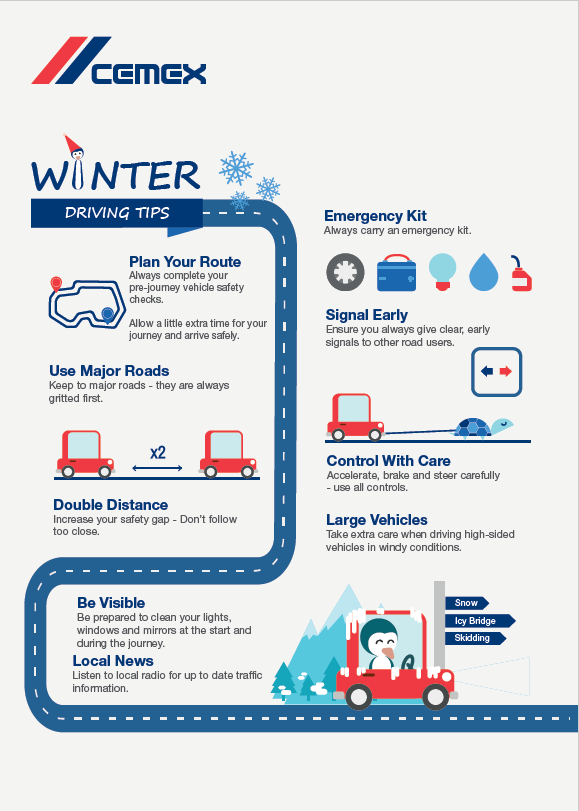As daylight hours get shorter, we all spend longer in the car driving in the dark and sometimes facing hazardous conditions such as fog, rain, sleet and snow.
Many people underestimate the significance of seasonal changes on the driving environment and carry on driving without reminding themselves of the potential hazards.
Two of these hazards are: –
Reduced grip due to ice, snow and rain – stopping distances are greatly increased
Reduced visibility due to fog, sleet, snow or even low winter sun
How to manage these potential hazards:
- To increase stopping distance, increase the gap to the vehicle in front of you (even when other drivers pull into that gap). This should be double the gap you normally give – for icy or muddy roads, make it more.
- Check your tyre tread depth. Stopping distance increase with reduced tread depth. Have you checked your tyres lately? Ideally in winter, tread depth should not go below 3mm.
Some tips for before and during your trip:
- Check your vehicle; lights, tyres, wipers, anti-freeze, engine coolant, screenwash etc
- Carry an emergency winter car kit
- Plan your journey:
- Ensure sufficient rest and check weather and road conditions regularly
- Reduce travel distances & increase fatigue breaks
- Adjust your driving to the conditions:
- Plan for slower journey times – allow time for vehicle checks / demisting
- Stay off the roads in severe weather and stay on main roads where possible, these are the roads which are likely to be gritted
Please shared the Winter Driving Tips in the download section of UK News with your teams and Drive to Arrive Safely.
